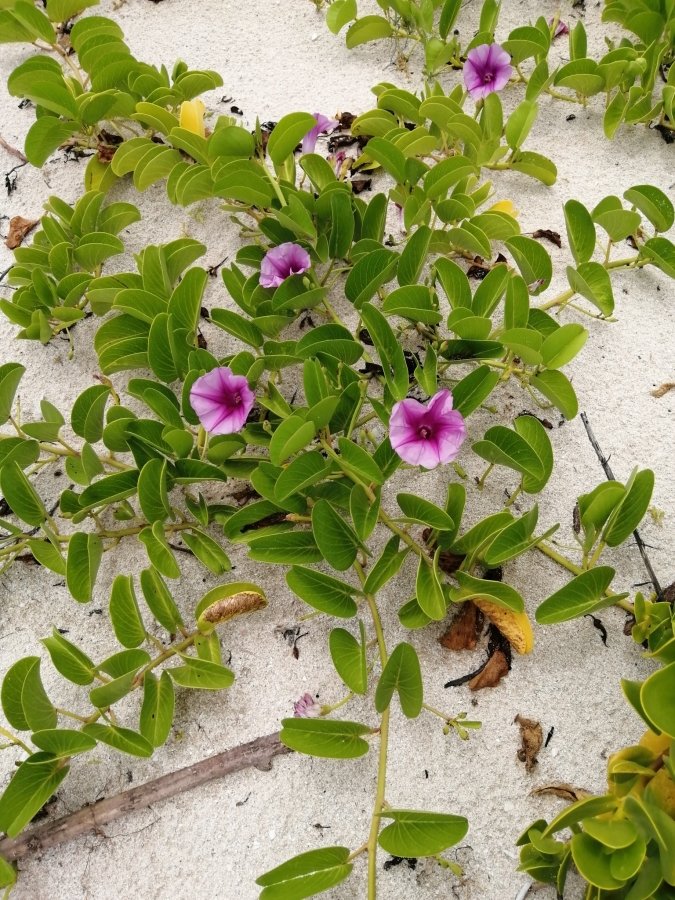 Image 1 of 5
Image 1 of 5

 Image 2 of 5
Image 2 of 5

 Image 3 of 5
Image 3 of 5

 Image 4 of 5
Image 4 of 5

 Image 5 of 5
Image 5 of 5






Railroad Vine Cuttings - (Ipomoea pes-caprae)
Railroad Vine (also known as Goat’s Foot or Beach Morning Glory) is one of the most widely distributed beach plants in the world. In the United States, it occurs along the Atlantic coast of Georgia and Florida, and along the Gulf coast from Florida to Texas. Native plant nurseries in Florida consider it a native plant even though it’s native origin is obscure.
It is primarily found in coastal habitats and is highly adapted to growing in the harsh conditions of dunes and beaches. It gets the namesake “railroad vine” because of it’s tendency to send out long shoots called “stolons” that resemble winding railroad tracks. This unique adaptation, coupled with it’s high tolerance to salt spray, make it a go-to plant for dune restoration/erosion control in coastal communities all around the world.
In the context of a food forest, railroad vine excels as an early succession ground cover species. It tolerates sandy soils and doesn’t get eaten by herbivores. It flowers off and on throughout the year, attracting beneficial pollinators to a young food forest. It requires constant pruning as it’s semi-vining growth habit can sometimes interfere with young seedlings. Constant pruning provides an impressive amount of biomass and helps keep the plant bushy and dense.
Site Preference: Prefers full sun and can handle almost any soil conditions. It’s frost sensitive and may die back in the winter but will readily come back in the spring.
All cuttings are 6-9 inches in length.
Ipomoea pes-caprae
Railroad Vine (also known as Goat’s Foot or Beach Morning Glory) is one of the most widely distributed beach plants in the world. In the United States, it occurs along the Atlantic coast of Georgia and Florida, and along the Gulf coast from Florida to Texas. Native plant nurseries in Florida consider it a native plant even though it’s native origin is obscure.
It is primarily found in coastal habitats and is highly adapted to growing in the harsh conditions of dunes and beaches. It gets the namesake “railroad vine” because of it’s tendency to send out long shoots called “stolons” that resemble winding railroad tracks. This unique adaptation, coupled with it’s high tolerance to salt spray, make it a go-to plant for dune restoration/erosion control in coastal communities all around the world.
In the context of a food forest, railroad vine excels as an early succession ground cover species. It tolerates sandy soils and doesn’t get eaten by herbivores. It flowers off and on throughout the year, attracting beneficial pollinators to a young food forest. It requires constant pruning as it’s semi-vining growth habit can sometimes interfere with young seedlings. Constant pruning provides an impressive amount of biomass and helps keep the plant bushy and dense.
Site Preference: Prefers full sun and can handle almost any soil conditions. It’s frost sensitive and may die back in the winter but will readily come back in the spring.
All cuttings are 6-9 inches in length.
Ipomoea pes-caprae